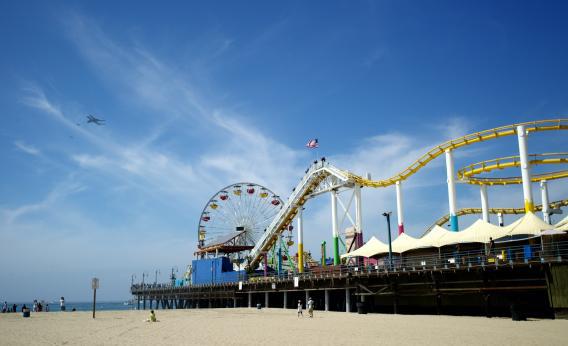Darby Minnow-Smith has an informative Q&A at Grist with Shannon Parry, an Assistant Director at the Office of Sustainability and the Environment in Santa Monica, CA. Santa Monica, if you don’t know, is a great place—a little municipality surrounded by the City of Los Angeles on three sides and the Pacific Ocean on the forth. It’s got gorgeous weather, accesss to the beach, a walkable commercial core by the coast, and as Minnow-Smith writes “for nearly 20 years, Santa Monicans have made a concerted effort to green their city.”
And they’ve had a ton of success. But there’s one huge problem. Hardly anyone lives there. In 1970, the town had a population of 88,289. In the intervening forty years, the United States of America as a whole has had 50% population growth—rising from just over 200 million residents to about 310,000 million residents today. Santa Monica, by contrast, clocked in at 89,736 people in the 2010 census. So how come population growth in Santa Monica is so slow? Is it a terrible place to live? No way. It’s pretty great. Along with its amazing quality of life amenities, it’s prosperous with a median household income of $68,000 that’s well above either the national or the California average. In fact, it’s such a great place to live that according to the Census Bureau the median value of owner occupied housing in Santa Monica is $985,500.
And now you see why more people don’t move to Santa Monica. Not everyone can afford a million dollar house. So while Santa Monica sits nice and green nestled by the coast, the population boomed instead in Riverside and San Bernardino counties. Those are less-prosperous places with worse economic opportunities. The fundamentals in terms of coastal amenities are worse. And it’s much worse for the environment to sprawl out further and further inland rather than to develop the already-developed Santa Monica land more intensively. And clearly it’s very valuable land. There’s only so much oceanside property within convenient commuting distance to the main employment centers of one of the world’s largest cities. The economic returns would be there to develop it more intensively and let more people experience Santa Monica, and the environmental benefits to having population growth there rather than elsewhere are enormous.
